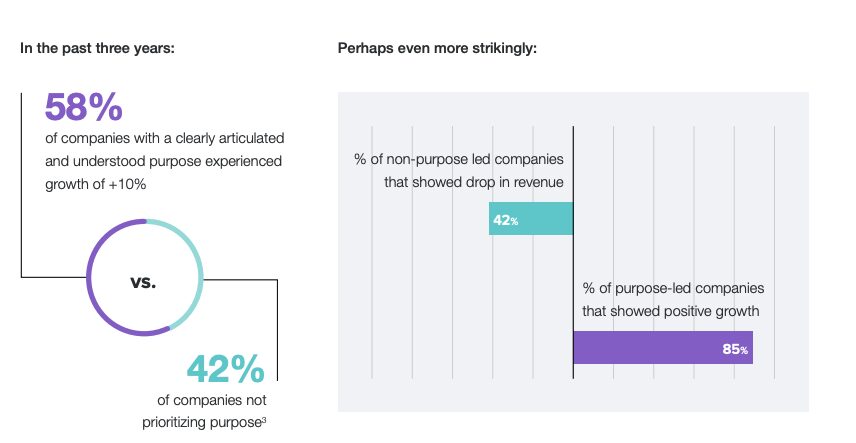
If you’re wondering what spend culture is, you’re probably assuming it’s just another buzzword from the corporate world. And that may very well be true, but the concept is an important one nonetheless.
Spend culture refers to how organizations spend (or save) their capital. More than a system for setting budgets or planning the next big investment, spend culture represents the values and practices that your company upholds when spending money. While some companies invest in soft assets like people and training programs, others focus on strategic investments in real estate or the latest technology. Another group may pinch pennies at the expense of growth or put off making hires that would help drive more revenue.
Here, we’ll look at how you can define your company’s spend culture and what it says about your business.
[content_upgrade cu_id=”4657″]Free Download: Fostering a Healthy Spend Culture[content_upgrade_button]Click Here[/content_upgrade_button][/content_upgrade]
Spend Culture’s Impact on the Organization’s Overall Culture
Spend culture is all about how a company chooses to spend its money—be it on recruiting top talent, implementing the best technology, or pinching pennies to address short-sighted problems. And it’s these decisions that reveal a lot about a company’s management style, mission, and priorities.
In other words, spend culture is just culture.
Often, spend culture gets ignored, as it’s siloed off in the realm of finance, away from the rest of the company. People are too quick to overlook how financial decisions can impact the emotional and cultural aspects of the company.
We see this all the time in organizations where some departments feel that they lack the tools they need to do their jobs optimally. And whether it’s better software or even more comfortable chairs, those feelings can quickly turn into resentment. The finance vs. everyone else dynamic can lead to some negative emotions.
It’s a Bit Like Cultural Fit
You’re probably familiar with the idea of cultural fit. Organizations aim to hire people whose communication and behavior styles sync with the company’s mission and values. While hiring for culture comes with some complicated baggage—like potential discrimination charges or a workforce that represents one viewpoint—the goal is to build a team that supports the same mission.
When there’s disagreement about where the company is heading, that disconnect can stand in the way of milestones. The same principle applies to organizational spending. If one decision-maker wants to invest in top talent, while another sees that investment as a waste of money, such a mismatch can have ripples throughout the organization.
Beyond these specific disagreements, those involved in making decisions about how the organization’s money is invested should also have similar ideas about the overall spend culture.
In other words, decision-makers are better equipped to drive value for the company if they’re working toward the same set of goals. Key stakeholders need to understand the benefits that determine how they allocate budgetary resources, and from there, ensure that internal processes are in place to support values.
And though this graphic is referring to culture in general, research shows that companies with a defined purpose are better equipped for growth.

How Spend Culture Supports Goals
According to Gartner, only a third of HR leaders agree that their organization’s culture is able to drive future performance.

All spend decisions come with a return on investment, and as such, the spending strategy you choose needs to support the big-picture vision for the company. Otherwise, decision-makers risk getting in the way of their own goals.
For example, failing to provide professional development opportunities can cause employee churn rates to rise. Overspending on developing new products can eat into operating costs. The list goes on.
This article looks at the example of Snap Inc., better known as the company behind Snapchat. It mentions that Snap publicly rolled out a bunch of new features last year, but laid off 100+ employees shortly thereafter. While we can only speculate, this is a good example of how spend management can sometimes undermine the health of the organization big-picture.
For a smarter spend culture, here are some things that organizations need to think about:
- Is your organization reactive or proactive?
- Are you investing in growth?
- How do you evaluate vendors?
- Do saving strategies set the tone for long-term success?
- Do existing operations align with the company’s belief system?
From there, consider what changes need to be made to set your organization up for success. The Harvard Business Review brings up an important point: if you want to change your company culture, you’ll need to update internal policies to reflect those reforms; otherwise you’ll be stuck dealing with the same problems further down the road.
Centralized Purchasing vs. Collaborative Purchasing
Having a centralized purchasing department is one of the best ways to keep tight controls overspending, particularly where indirect spend is concerned.
On the other hand, strict controls over who determines the budget and who is able to make purchases can mean that those without authority may feel removed from the process. In turn, they may even disengage from helping the organization build the right strategy.
From a procurement standpoint, one of the biggest challenges is ensuring that the rest of the organization stays in compliance with their rules and spending policies.
A collaborative compromise can help resolve these issues. Consider involving departments, allowing them to submit their own budgets based on individual goals and priorities. From there, decision-makers can review the budgets on a holistic level and make the final call.
If you’re using a tool like ProcurementExpress.com, you can limit purchases to a shortlist of approved vendors and track POs against budgets in real-time.

Cost-Cutting Is Not a Strategy in Itself
Spend culture isn’t always seen as a positive concept, as it often gets associated with cost-cutting. The important thing to remember is that cost-cutting isn’t really a strategy at all; it’s a reactive measure that businesses use to save money, for example by implementing a hiring freeze. Internally, slashing costs can create an environment where misunderstandings and blame become the norm.
If your organization is scrambling to cut costs, it may be time to take a good, hard look at your processes. From there, ask yourself, is your spend culture standing in the way of long-term growth? Are employees jumping ship due to a lack of development opportunities? Are budgeting decisions typically a reaction to circumstances, or are they part of a proactive strategy?
The point is that spend management isn’t just about forcing cost savings, but instead about developing a culture that encourages and supports better spend decisions.
The goal should be to develop a spend culture that drives value for the organization by aligning with strategic goals—be it purchasing sustainable materials, nurturing talent, or expanding your product line.
Bottom Line: It May Be Time to Rethink Your Budgets
Look, budgeting is essential, but what brands need to know is that the process should be treated as an ongoing strategy, not a last-minute cost-slashing effort.
Whatever your spend culture, there should be a close connection between financial planning and forecasting. The idea is that better coordination and alignment can turn budgeting into a strategy for investment, growth, or employee retention.
ProcurementExpress.com makes it easy to strike a balance between purchasing control and collaboration. The software includes custom approval flows that limit unauthorized spending, enable easy budget tracking, and provide the ability to connect POs to budgets for real-time spend visibility.
To learn more about how ProcurementExpress.com can help companies improve their spend culture, sign up for a free demo.
[content_upgrade cu_id=”4657″]Free Download: Fostering a Healthy Spend Culture[content_upgrade_button]Click Here[/content_upgrade_button][/content_upgrade]
Get Top Rated Purchasing Software & Replace The Purchasing Book.


